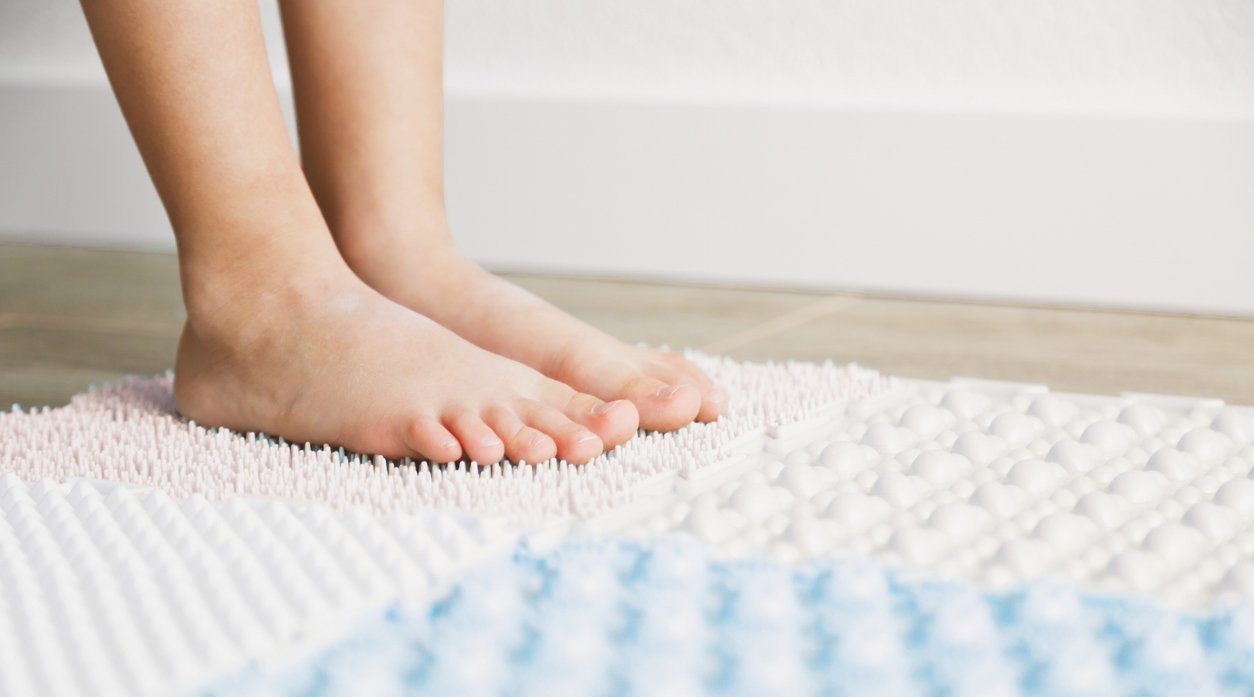More commonly known as ‘fallen arches’ or ‘flat feet’, pes planus is a condition where the inner arch of your feet ‘collapse’ and the sole or soles of your feet touch the floor when standing. While some individuals with ‘flat feet’ may not experience any symptoms, for others, it can lead to discomfort and pain. Understanding the symptoms, causes, and treatment options for flat feet is essential for managing this condition effectively. Read on to find out more!
Symptoms of Flat Feet
Pain: Pain along the inside of the arch, heel, ankle, knees or lower are all common symptoms of flat feet. This discomfort may worsen with prolonged standing or physical activity.
Swelling: Some individuals with flat feet may experience swelling along the inside of the foot, ankle or lower limb due to the strain on the soft tissues.
Difficulty Standing or Walking: Flat feet can affect the alignment of the lower body, leading to difficulty or pain when standing for long periods or walking long distances.
Foot Fatigue: Individuals with flat feet may experience fatigue in their feet and legs due to the lack of proper arch support.
Causes of Flat Feet
Genetics: Flat feet can be hereditary, meaning that they run in families. If one or both parents have flat feet, their children are more likely to develop the condition too.
Pregnancy: Changes in hormones during pregnancy can cause your feet to widen, swell or flatten.
Weak Foot Muscles: Weakness in the muscles that support the arch of the foot can contribute to the development of flat feet.
Injury or Trauma: An injury to the feet or ankles, such as a fracture or tendon damage, can lead to the development of flat feet.
Medical Conditions: Certain medical conditions such as rheumatoid arthritis can increase the risk of developing flat feet.
Incorrect Footwear: Unsupportive footwear can aggravate symptoms or progress the condition of flat feet.
Treatment Options for Flat Feet
Orthotic Devices: Custom-made orthotic insoles are one of the most effective methods of management for fallen arches. They provide support to the foundation of your foot and help distribute pressure more evenly while walking or standing.
Footwear: Wearing supportive footwear with adequate arch support can help alleviate the discomfort caused by fallen arches. Look for shoes with a firm midsole and good arch support.
Physical Therapy: Specific exercises aimed at strengthening the muscles of the feet and ankles can help to improve arch support and stability.
Weight Management: Maintaining a healthy weight can reduce the pressure and strain on the feet and lower limbs, which may help alleviate symptoms associated with flat feet.
Medication: Over-the-counter pain killers can help alleviate pain and inflammation associated with flat feet when needed.
Surgery: In some severe cases where conservative treatment methods don't provide sufficient relief, surgery may then be considered to correct structural abnormalities or realign the foot's bones and tissues.
Conclusion
Flat feet can be a great source of discomfort, pain, and even insecurity for many individuals. With proper management, the symptoms and severity of the condition can often be alleviated. If you're experiencing persistent foot pain or discomfort, consult with a Podiatrist or healthcare professional to get an accurate diagnosis and guidance on appropriate treatment. Whether through orthotic devices, physical therapy, or other interventions, there are various options available to help you find relief and improve your quality of life.
If you have flat feet or are suffering with any of the symptoms outlined above, our team are here to help. You can schedule an appointment with one of our expert podiatrists by clicking here, or find out more about our custom orthotics service here.



